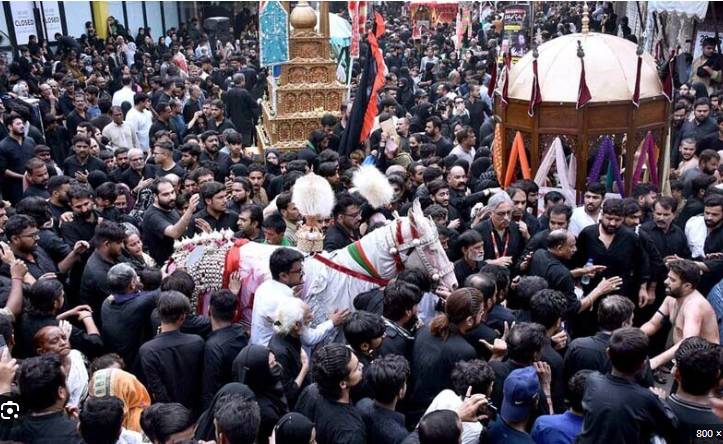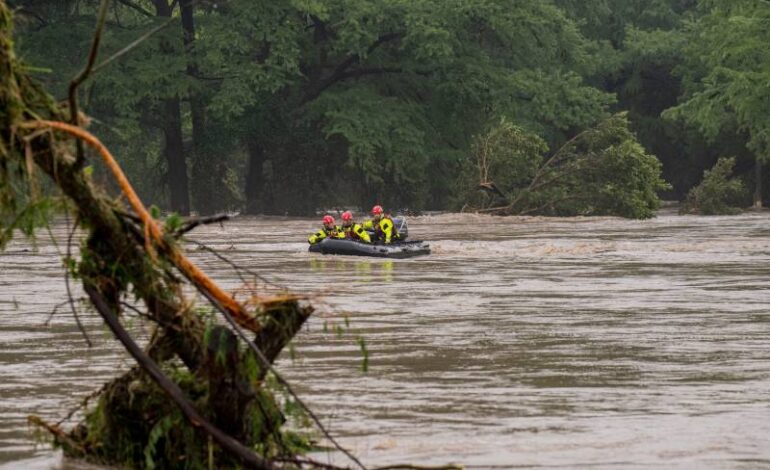
Pakistan Observes 9th Muharram with Religious Processions and Tight Security
The 9th of Muharram-ul-Haram was observed with solemnity across Pakistan as people gathered to pay homage to the martyrdom of Hazrat Imam Hussain (RA), the grandson of Prophet Muhammad (PBUH), and his loyal companions who were martyred in the Battle of Karbala more than 1,400 years ago. Religious gatherings known as majalis were held in numerous imambargahs, and processions featuring symbolic Tazia and Alam were taken out in both major and smaller cities throughout the country.
Security arrangements were significantly strengthened to ensure peace during the commemorations. The Interior Ministry, under the direction of Syed Mohsin Naqvi, introduced a mobile control room in Islamabad for the first time. This unit is equipped to operate even in the absence of mobile signals, allowing for uninterrupted coordination and surveillance during the Ashura security operations.
In Lahore, the central 9th Muharram procession started from Pando Street, where Allama Qamar Abbas Mujahid narrated the historical events of Karbala. Another major procession moved from Qasre Batool Imambargah in Shadman Colony, where a large number of mourners gathered for a majlis addressed by Maulana Syed Sajjad Haider Naqvi, who highlighted the spiritual status of the Ahle Bait (RA) in Islam. A separate majlis at Imambargah Atia Ahle Bait, Nicholson Road, featured a sermon by Allama Absar Naqvi focusing on the unmatched sacrifice made by Imam Hussain (RA) and his companions.
In Multan, 80 processions and 166 majalis were organized across the city. The main procession originated from Imambargah Hussaini in Mumtazabad. Additional processions were taken out from Jinnah Street on Tughluq Road and Imam Bargah Jamal Shah later in the evening. Another prominent procession began at Suraj Miani Chah Mamoole Wala and one more was scheduled from Darbar Sakhi Sultan. Over 3,700 police officers along with more than 1,200 volunteers were deployed to maintain law and order.
Karachi witnessed the central procession starting from Nishtar Park after a majlis addressed by Allama Shehenshah Hussain Naqvi. The procession route included major city areas such as Numaish, Sadar, Radio Pakistan, Jamia Cloth Market, and Kharadar before concluding at Husainia Iranian. Namaz-e-Zohrain was offered at Imambargah Ali Raza. A parallel procession began from Bab-e-Fatima Imambargah, where Maulana Muhammad Ali Naqvi delivered a sermon. A monitoring room was set up at Soldier Bazaar, and a heavy presence of police and Rangers was ensured along the procession routes. In light of security risks, roads such as the one connecting Liaquat No.10 to Teen Hatti were closed.
Bahawalpur also hosted several processions and majalis. The central procession started from Beri Wala Chowk in Shahdara and concluded at the Shia Jamia Mosque near Zanana Hospital. In Uch Sharif, a mourning procession in memory of Hazrat Abbas Alamdar (AS) was held from Imambargah Mohalla Khawajgan.
In Rohri, the historic Nodhala Tazia procession was taken out from the 550-year-old Karbala-e-Muala, drawing large numbers of mourners. Mianwali stood out with its unique boat procession tradition, now over a century old. Starting from Marri Indus, the boat procession made its way to Wandha Kakrran, where nyaz was distributed before the mourners returned. Participants were required to wear life jackets, and rescue teams remained on standby.
In Mityari, a symbolic and intense mourning ritual was carried out as mourners dug a trench, filled it with burning wood, and walked barefoot across the fire to express their sorrow and dedication to Imam Hussain (RA). Chest beating continued alongside the fiery ritual while police and rescue officials ensured safety measures were in place to prevent any accidents.
The 9th of Muharram across Pakistan was marked with devotion, tradition, and resilience, reflecting the nation’s deep reverence for the legacy of Karbala and its message of sacrifice, justice, and unwavering faith.






